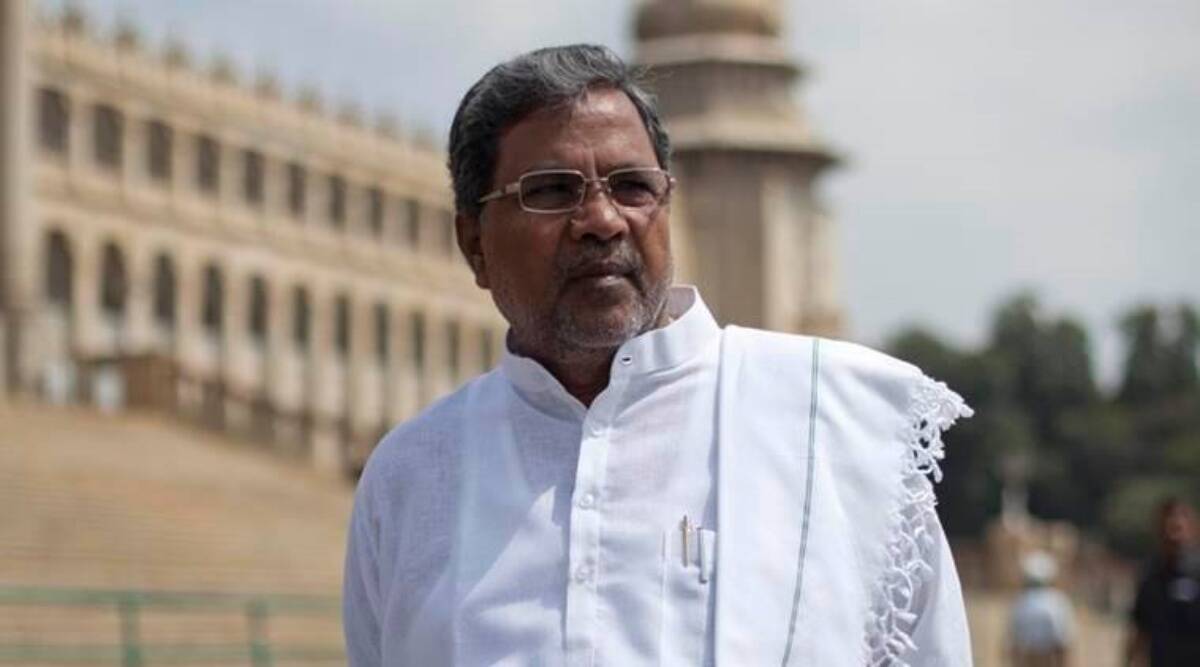Targeted direct benefit transfers (DBT) enabled by the so-called JAM trinity of Jan Dhan bank accounts, Aadhaar and mobile numbers may have been originally pushed by the Narendra Modi government at the Centre, but it is the states — the newly-elected Congress government in Karnataka being the latest — that seem to be the most enthusiastic adopters on the ground.
The Siddaramaiah-led government on Friday formally cleared the implementation of two DBT schemes: Gruha Lakshmi (transferring Rs 2,000/month to women heads of all households) and Yuvanidhi (unemployment allowance of Rs 3,000/month for graduates and Rs 1,500/month for diploma holders).
The two schemes — along with the other three Congress manifesto “guarantees” of 200 units of free power per month to all houses, 10 kg grain/person/month for below-poverty-line families and free public transport bus travel for women — are estimated to cost around Rs 50,000 crore.
Karnataka had 1.34 crore households in the 2011 Census. The annual tab for Gruha Lakshmi alone, if one crore of those households are covered, will be Rs 24,000 crore. Gruha Lakshmi, to be rolled out from August 15, is a variant of the Tamil Nadu government’s Magalir Urimai Thogai scheme. The latter, which gives Rs 1,000 per month to women heads of “eligible households”, was promised in the ruling Dravida Munnetra Kazhagam’s 2021 assembly election manifesto. But its actual launch is scheduled only this September. Also, the scheme, with a budget of Rs 7,000 crore for 2023-24, covers only women of “eligible” households, not all of them.
These DBT schemes, however, pale in comparison to those of neighbouring Telangana and Andhra Pradesh (AP).
Telangana has since May 2018 been implementing a Rythu Bandhu scheme for farmers, providing an “investment support” of Rs 4,000 per acre per crop season that was raised to Rs 5,000/acre/season from 2019-20. Between 2018-19 and 2022-23, the K Chandrashekar Rao-headed government has cumulatively disbursed Rs 65,559 crore over 10 seasons, with the money deposited into the Aadhaar-seeded accounts of around 65 lakh land-owning farmers in the state.
Rythu Bandhu has inspired similar agriculture-DBT schemes, including the Centre’s Pradhan Mantri Kisan Samman Nidhi (PM-Kisan) and AP’s YSR Rythu Bharosa.
PM-Kisan, launched in December 2018, months before the last Lok Sabha elections, extends an annual income support of Rs 6,000 to about 11.25 crore land-holding farming families across India. YSR Rythu Bharosa also gives financial assistance on a per-farmer basis as opposed to per-acre without any size limit under Rythu Bandhu. The amount paid is higher at Rs 13,500 per year – Rs 6,000 through PM-Kisan and the AP government’s top-up of Rs 7,500.
Apart from Rythu Bandhu, Telangana is implementing a host of welfare schemes under DBT mode: Asara monthly pensions of Rs 2,016 for nearly 45 lakh senior citizens, widows, beedi workers, toddy tappers and other targeted beneficiaries (it is Rs 3,016/month for disabled persons); Rythu Bima (group life insurance with Rs 5-lakh cover) and debt relief for farmers; and Kalyana Lakshmi/Shaadi Mubarak (Rs 100,116 one-time-grant for newly-wed brides from Scheduled Castes/Tribes, backward and minority communities); among others.
During 2019-20 to 2022-23, the Telangana government has transferred a total of Rs 78,965 crore under various DBT schemes other than Rythu Bandhu.
But India’s most DBT-advanced state is probably AP. Between June 2019 and March 2023, since it came to power, the government of Y S Jagan Mohan Reddy has transferred a cumulative sum of Rs 210,177.89 crore to some 7.89 crore beneficiaries under 28 DBT schemes, named mostly after himself or his late father Y.S. Rajasekhara Reddy.
The schemes to register the highest DBT payments are YSR Pension Kanuka for the old aged and other vulnerable sections (Rs 70,318.84 crore); YSR Aasara, Sunna Vaddi and Cheyutha for women self-help groups and entrepreneurs (Rs 36,922.57 crore); YSR Rythu Bharosa (Rs 27,062.08 crore); Jagananna Ammavodi Rs 15,000-per-annum assistance for mothers of Class 1-12 schoolchildren from low-income families (Rs 19,674.34 crore); Jagananna Vidya Deevena for reimbursing higher education fees of students from poor households (Rs 9,947.84 crore); and Dr YSR Aarogyasri Rs 5-lakh/family/year cashless health insurance (Rs 8,845.53 crore).
The AP government even maintains a community-wise beneficiary break-up under its different DBT schemes: Out of the Rs 210,177.89 crore payments, Rs 99,141.62 crore has gone to backward communities, Rs 34,921.52 crore to SCs, Rs 20,460.45 crore to Kapus, Rs 10,363.82 crore to STs, Rs 11,886.84 crore to minorities and Rs 33,403.63 crore to others.
The appeal of DBT schemes lie both in their JAM-enabled technical feasibility (of identifying beneficiaries and transferring money at large-scale in real-time) and potential political dividends (from beneficiaries “seeing” the money in their accounts). The southern states have been the quickest to latch on the idea.
A criticism of DBT schemes is that it has reduced state capacity and voter expectations pretty much to making and receiving cash transfers. To that extent, they have detracted from the traditional brick-and-mortar government responsibilities of building schools, hospitals, roads and irrigation canals or investing in farm research and extension.
For more information call us at 9891563359.
We are a group of best insurance advisors in Delhi. We are experts in LIC and have received number of awards.
If you are near Delhi or Rohini or Pitampura Contact Us Here

